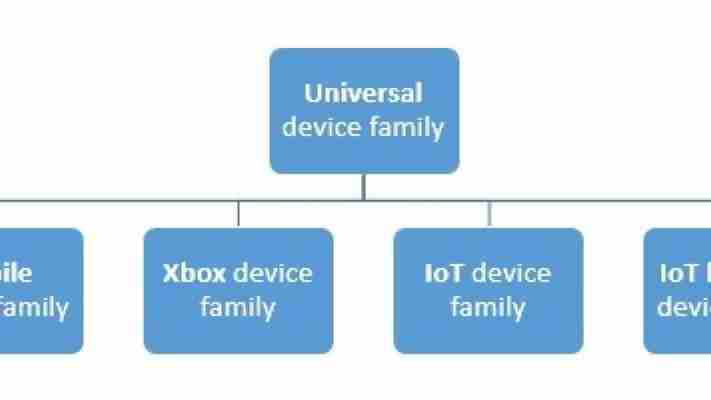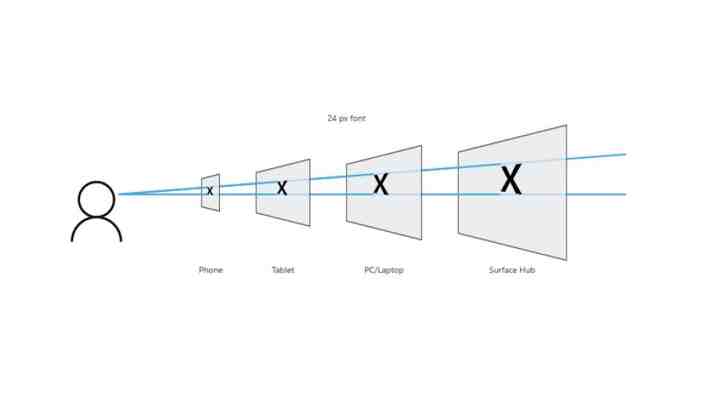Ever since Microsoft launched its Windows Phone operating (OS) system back in 2010, it has struggled to set the mobile space alight. The problem was, developers weren’t willing to spend time creating apps for a platform with low user numbers, and users weren’t ready to leave their app-rich Android and Apple ecosystems for a smartphone OS with no apps. It was a vicious cycle, and one which did Microsoft no favours.
More recently the same issue has arisen for Windows 10 hybrid devices, using apps and accessing services through the browser in desktop mode works just fine, but switch into tablet mode and the number of apps designed for touchscreen input lags well behind the selection of pure mobile operating systems.
View latest Microsoft discount codes
Microsoft's answer to all this is the Universal Windows Platform (UWP) which has come alongside Windows 10. It changes the way that software is developed for Windows devices in a bid to bolster the number of apps that are suitable for smartphone, tablet, laptop and desktop use - and even beyond that with support for the Xbox One and who knows what in the future.
What is UWP?
First introduced in Windows 10, Microsoft’s UWP is an application architecture created to enable Windows app developers to build Metro-style apps that run on both desktop and mobile versions of the latest Windows systems (Windows 10 and Windows 10 Mobile) without the need to be re-written separately for each platform.
With UWP, developers only need to write an app – be it a video game or a computer program - once, and the software ports it to run smoothly and fit the screen perfectly on any Windows 10 device, now or in the future. This works across a variety of devices, large or small, whether it’s a smartphone, tablet, all-in-one PC, the Xbox One video game console, and soon even the HoloLens augmented reality headset.
This brings a good deal of benefits to both developers – making it quicker for them to write apps for more platforms - and consumers, who can see their favourite apps on a plethora of devices without waiting for them to be ported across to the mobile platform and vice versa.

How it works
At the core of UWP is the idea that users want their experiences to be available across all their devices, whichever they deem is most convenient or productive for the task at hand. One of the most important things here is screen resolution and how it effects user experience. In UWP, Microsoft ensured that apps built on the platform automatically adjust the size of controls , fonts, and other user interface (UI) elements so that they work flawlessly on all Windows devices.
How this works is: when an app runs on a device, the UWP system uses an algorithm to normalise the way UI elements display on the screen. This scaling algorithm takes into account viewing distance and screen density (pixels per inch) to optimise for perceived size rather than physical size. For example, the scaling algorithm ensures that a font on a TV the other side of the room is just as legible to the user as a font on a five-inch smartphone that's a few inches away.
Because of how the scaling system works, when developers design a UWP app, they're designing in effective pixels, not actual physical pixels meaning they can ignore the pixel density and the actual screen resolution when designing, making it much easier for them to develop apps made to work across different device sizes.
This is how UWP easily supports a number of screen sizes, and also a variety of interaction models, whether it be touch, mouse & keyboard, a game controller, or a pen.

Benefits
So basically, the main benefits UWP will bring to device families is that an app built on the platform can run on any, or even all, of a variety of devices from phones, tablets, and desktop computers up to set top boxes and Xbox consoles. The app can also use adaptive code to dynamically detect and use features of a device that are outside of the universal device family.
With the introduction of UWP in Windows 10, Windows 10 titles - such as Rise of the Tomb Raider , and Gears of War Ultimate Edition - will be able to span all of the Microsoft platforms, from PCs to Xboxes, meaning users won't have to wait for release of games on one platform or another. And with free migration from previous versions of Windows, Microsoft says there is a steadily increasing number of Windows 10 devices . The combination of these two things means that Windows 10 titles will be able to reach a huge number of customers through the Windows Store.
As Microsoft CEO Satay Nadella said: "The powerful concept of Windows and Windows 10 is that it is one application platform, one store for developers, that then should attract developers to build once and have them run across all the Windows." It seems Microsoft's job now is using the benefit of UWP to persuade more developers to build on the platform.
Issues
It's not all rosy though, as with UWP Microsoft is effectively moving PC development closer to the walled garden of iOS - where you can only install apps approved by Apple and bought from Apple unless you jailbreak your device to enable it to run code outside of Apple's control. The current UWP setup isn't this draconian, being more akin to the Android approach, where you can install apps from anywhere if you disable the security setting preventing you from doing so - which is pretty easy to find in settings.
However, this could just be a first step, with Microsoft looking to profit from its Windows Store rather than through charging for Windows itself. It would be easy for Microsoft to create cut-price devices that could only install apps from its store, much like the abandoned Windows RT tablet from a few years back.
The first outcry has come from games developers, who are highly reliant upon Microsoft's library of DirectX development tools and upon the Windows platform they run on. If Microsoft started to limited DirectX updates only to UWP apps that then had to be sold through the Windows Store it would change the face of PC gaming overnight. Such a threat has always been present, which explains why the likes of Valve - who's Steam game retail business is hugely reliant on Windows based software - has developed its own Linux-based gaming OS, called Steam OS .
It's early days for UWP, but it could end up being the most radical change to Windows since its inception.







Leave a Reply